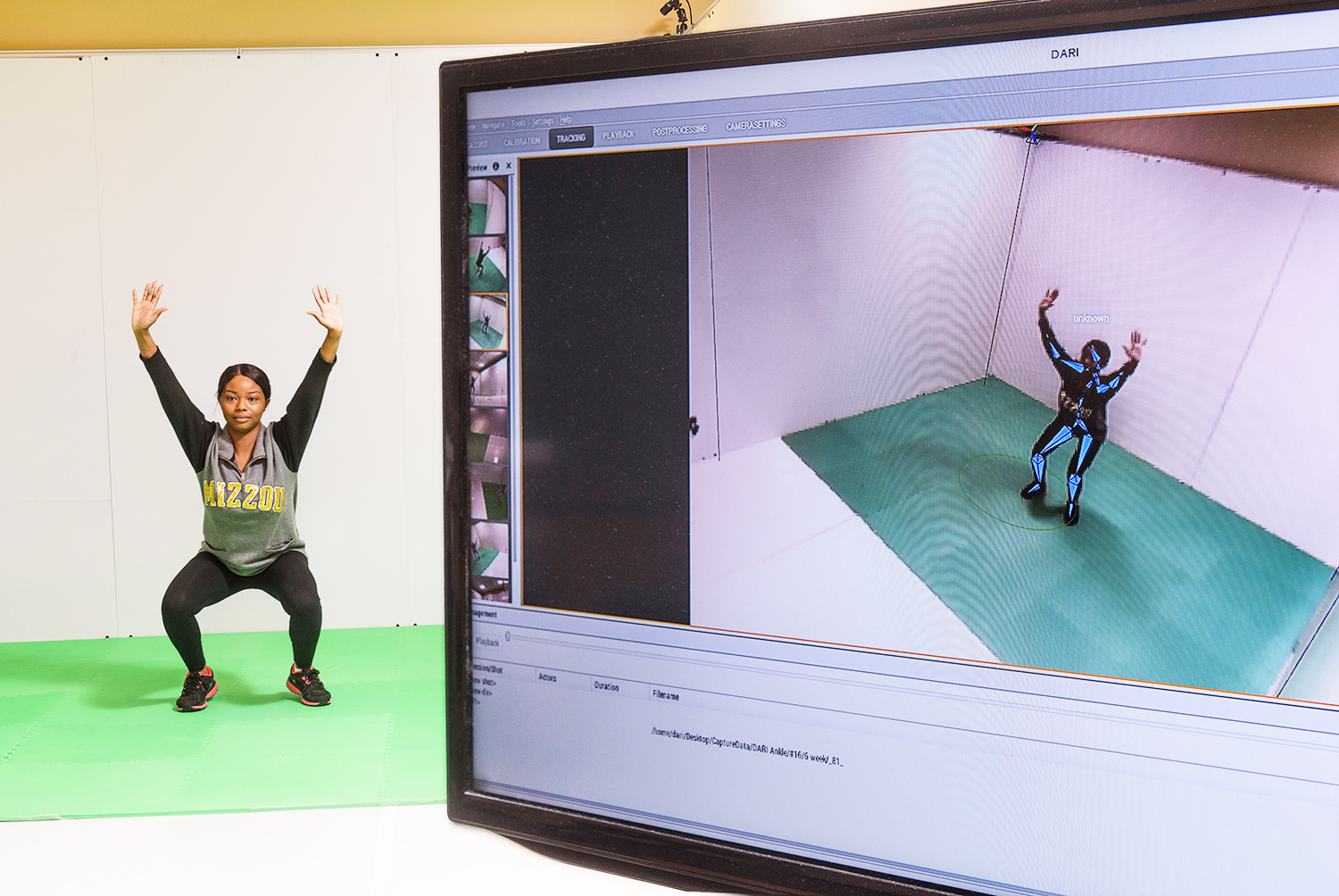Bodies in Motion
Using motion-capture technology, the Missouri Orthopedic Institute visualizes and quantifies human motion.

Avatar actors in black suits, covered head-to-toe in Ping-Pong ball shaped diodes might come to mind when you hear the words “motion capture.” But they’re not making computer-animated films in Columbia. Using the Dynamic Athletics Research Institute (DARI) markerless motion capture system, the Missouri Orthopedic Institute has been using motion-capture technology to help athletes and patients stay at the top of their game.
DARI, a Kansas-based company, has been working with MOI for the past four years to test the various applications of “The DARI system,” as they call it, as it has evolved. The current iteration of the system consists of eight small cameras positioned at multiple angles that are able to discern where a person’s joints are without the need for diode-covered suits, while collecting bio-mechanical data based on the subject’s movements. According to Ryan Comeau, DARI managing partner and owner, the system wasn’t always this paired down. “We are like night and day when it comes to the capability of the technology at this point,” Comeau says. “We’ve lowered the technology footprint from 18 cameras to eight cameras, and the technology is now fully mobile.”
Brett Hayes, director of therapy services for MOI, sees the DARI system’s accuracy in collecting data as one of its key components. “You could have 10 people look at the same patient and all 10 would come up with slightly differently results,” Hayes says. “This quantifies down to the most minute degree. It is always telling you the most specific amount of data in someone’s movement.”
Created with the goal of making precise bio-mechanical data more accessible to clinicians, the DARI system measures quantifiable data associated with movement — the kinematic analysis, the angles, the speeds, velocity and rotations, the ground forces and the joint stress caused by the feet.

Working with Mizzou Athletics, Hayes is able to collect data on all athletes to establish their individual baseline of ability by going through a battery of movements, which includes jumps, cuts and sprints. “This allows us to see what the athlete looks like in their most perfect state,” Hayes says. Then, when an athlete is injured or they begin underperforming, Hayes uses the DARI to re-evaluate them with the new data against the baseline. “We can see any type of degradation in their performance, and we can do something about it based on that data to keep them from avoiding injury or possibly over training,” Hayes says.
Though Hayes notes that the DARI system was originally created with measuring athletic performance in mind, they have found significant medical applications for the technology, specifically with total hip or knee replacement patients. According to Hayes, they can get a baseline of a patient’s mobility before they undergo surgery. Then, repeat the tests at various intervals following the surgery to compare data and understand mobility improvements over time.
As the first clinical application of the DARI motion capture system, MOI has remained ahead of the curve using this technology to its fullest potential, while DARI has continued to expand.
“They’ve grown very quick and they’re setting up systems all over the NFL and collegiate athletics.” Hayes says. “We’re not alone anymore.” Even so, DARI’s relationship with MOI remains strong as they continue to roll out their latest innovations. “We are really looking forward to all the new things this second phase of our relationship is going to take on,” Comeau says.
